The Complete Diamond Buying Guide

If you’re thinking about buying a diamond but overwhelmed by the quantity of information, you've come to the right place. Whether you're shopping for an engagement ring or another special jewelry piece, understanding the differences between diamonds can help you make the best investment for jewelry you'll treasure for a lifetime.
In this diamond buying guide we'll walk through the 4C's, the difference between grading natural and lab grown stones, diamond shapes and styles, costs and budgeting, and types of diamond retailers. Keep reading for everything you need to get started, from initial research to choosing your diamond’s setting.
Shop all white diamond rings at Sarah O. Jewelry
Natural Diamonds
These diamonds are formed deep within the earth over billions of years and then mined. Throughout history, natural diamonds have been linked to conflicts, making it extra important to ensure your diamond is ethically sourced.
At Sarah O., we are committed to using ethical, conflict-free diamonds. All diamonds sourced by us comply with the Kimberley Process, a commitment to remove conflict diamonds from the global supply chain.
Lab Grown Diamonds
Lab grown diamonds are produced synthetically in a lab, but have the exact same chemical composition as natural diamonds. They are a popular choice for their ethical sourcing, and are also significantly less expensive than natural diamonds.
Diamond Certification
The diamond certification process uses the 4 Cs to analyze each stone’s qualities and value. Diamond certificates are issued by leading gem laboratories, such as the Gemological Institute of America (GIA) or the International Gemological Institute (IGI).
For the majority of white diamonds, your retailer should be able to provide a certificate for you to verify its value. Some stones do not come with certification - usually this applies to stones with non-standard diamond cuts. Review each stone’s certification, if available, to make an informed decision before purchasing your diamond.
The 4 Cs
The 4 Cs - Cut, Clarity, Color, and Carat - are measures of quality in natural white diamonds. Lab diamonds are graded on a different scale as of 2025, which we'll dive into later in this article.
Each of the 4 Cs affects a diamond's appearance and value, so understanding these factors can help you find an ideal stone within your budget. Learn more about the 4 Cs below, or check out our diamond guide to view the grading scales.

Cut
A diamond's cut is all about craftsmanship. The quality of the cut affects a diamond's depth, width, and how its facets refract light.
Cuts are graded on a scale from "excellent" to "poor". A higher-quality cut brings out a diamond's natural sparkle, while lower-quality cuts are duller and lack sparkle.

Clarity
Clarity measures the quantity of inclusions within the stone. Inclusions are tiny imperfections that form naturally within both lab-grown and mined diamonds. Even eye-clean diamonds can have inclusions that affect how light moves through the stone.
The Clarity scale ranges from "no visible inclusions" to "imperfect". Stones with "very small inclusions" and better tend to look perfect to the naked eye.

Color
For white diamonds, Color denotes the absence of color naturally occurring in the diamond. This scale follows an alphabetical scale, from D (colorless) to Z (light yellow or champagne).
Warm metals such as yellow gold complement warm diamonds, making this category more flexible if you're shopping for a gold ring.

Carat
Carat refers to a diamond's weight; one carat is 200 milligrams. This name dates to the fourteenth century, when carob seeds were used to measure diamonds. Heavier diamonds are rarer and more valuable than small ones, so the price per carat increases the larger the stone is.
Sarah O. Tip: Diamonds that are just under a whole carat weight are often significantly cheaper than slightly larger stones. Try looking for a .9 ct diamond instead of a 1, or 1.9 instead of 2.
Grading Lab Grown Diamonds
Lab-grown diamonds are evaluated by leading gemological institutions to determine qualities such as color, cut, and clarity. For our designs, we select stones certified by IGI, GCAL, or GIA, each with slightly different grading systems. IGI and GCAL follow traditional grading methods, while GIA has recently updated its approach. No single institute is considered superior; each offers a reliable assessment of lab-grown diamonds. Regardless of grading differences, every diamond is carefully examined for its unique characteristics, all of which are detailed on its certification.
Beginning later in 2025, GIA (Gemological Institute of America) will use different descriptive terms to grade lab grown diamonds in lieu of the 4 C's scale.
Historically, lab grown diamonds have been graded on the 4 C's. This revised system will grade man-made diamonds into 'premium' or 'standard' categories. If the stone does not meet 'standard' qualifications, it will not receive a designation from GIA.
Premium Grade To be considered premium, a lab-grown diamond must meet the highest standards across every category:
Clarity: VVS (Very, very slightly included) or better
Color: D
Polish: Excellent
Symmetry: Excellent
Cut (round brilliant only): Excellent
Standard Grade If a diamond meets some premium benchmarks but not all, it falls into our standard category. Standard-grade lab diamonds are still beautiful and high-quality, with the following ranges:
Clarity: VS (Very slightly included)
Color: E–J
Polish: Very Good
Symmetry: Very Good (Good for fancy shapes)
Cut (round brilliant only): Very Good
Ethical and Value-Driven Considerations
At Sarah O., we’re proud to offer ethically sourced diamonds from both natural and lab-grown origins. Learn more about the ethical considerations of different diamond origins below.
Diamond Shapes and Styles
Round brilliant cut diamonds are the most popular choice for engagement rings for a reason. They're optimized for sparkle, giving more flexibility with the other 4 C's to get the look you want.
Non-round diamonds are called "fancy" shaped diamonds. There are also "fancy" colors that introduce more vibrancy than the traditional white diamond color scale. And some diamonds are prized for their inclusions, like salt-and-pepper diamonds.
From classic cuts to fancy shapes and specialty included diamonds, there's a style for every diamond lover. Read on to learn what to look for and how to choose your diamond's shape and style.
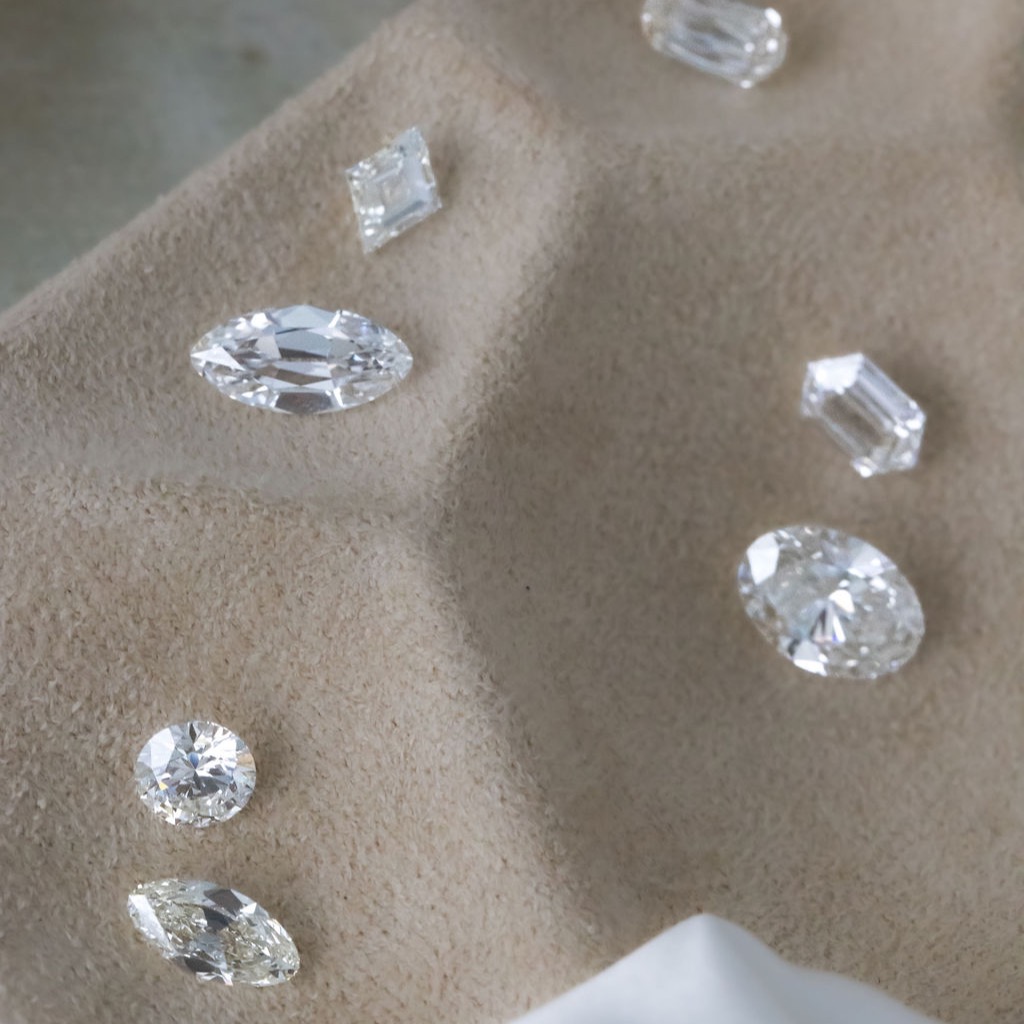
Fancy Diamond Shapes
All non-round diamond shapes fall into the "fancy" category. Here are some of the most popular choices for engagement rings:
Oval: an oblong round diamond, with similar brilliance
Emerald: rectangular, with step-cut facets that create unique flashes of light
Asscher: a square version of emerald, with step-cut facets
Radiant: a square or rectangular diamond with faceting that creates a "crushed ice" look
Marquise: oblong with pointed ends, and can look bigger than other cuts of similar carat weight
Pear: also known as teardrop, pear-cut diamonds are known for their single pointed end
Cushion: a rounded square or rectangular diamond with larger facets to increase brilliance
Rose: rose-cut diamonds are round with large facets, creating a unique antique look
Princess: this shape has pointed corners and is also known as square-cut
Heart: a heart-shaped diamond with one rounded point makes a brilliant symbol of your love
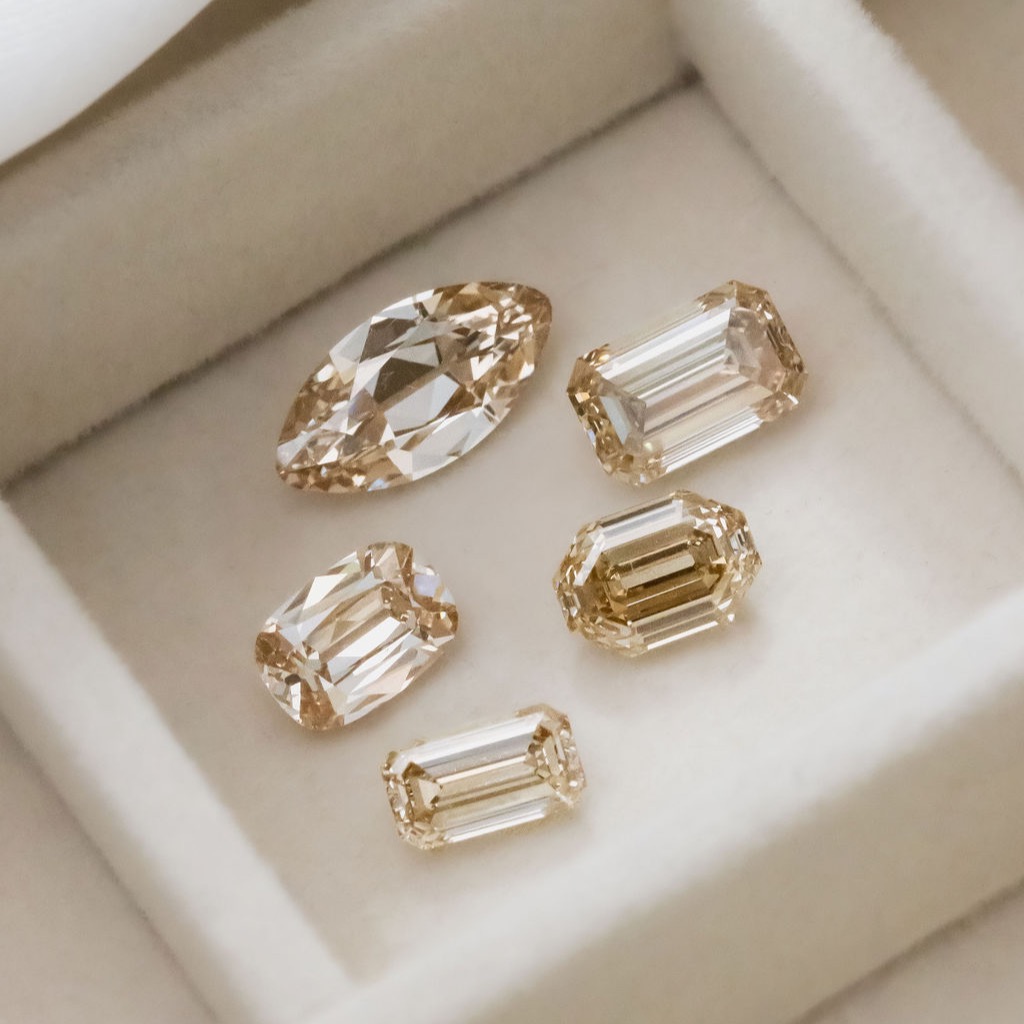
Fancy Diamond Colors
Diamonds can feature beautiful colors well outside of the D-Z color range. These unique hues result from trace minerals or structural irregularities within the diamond. They span nearly the entire rainbow, from deep blues and violets to warm yellows and oranges, beautiful pinks and reds, and even black.
The Gemological Institute of America grades fancy diamonds on three aspects:
Hue: the dominant color of the stone
Tone: the lightness or darkness of the color
Saturation: the intensity of the color
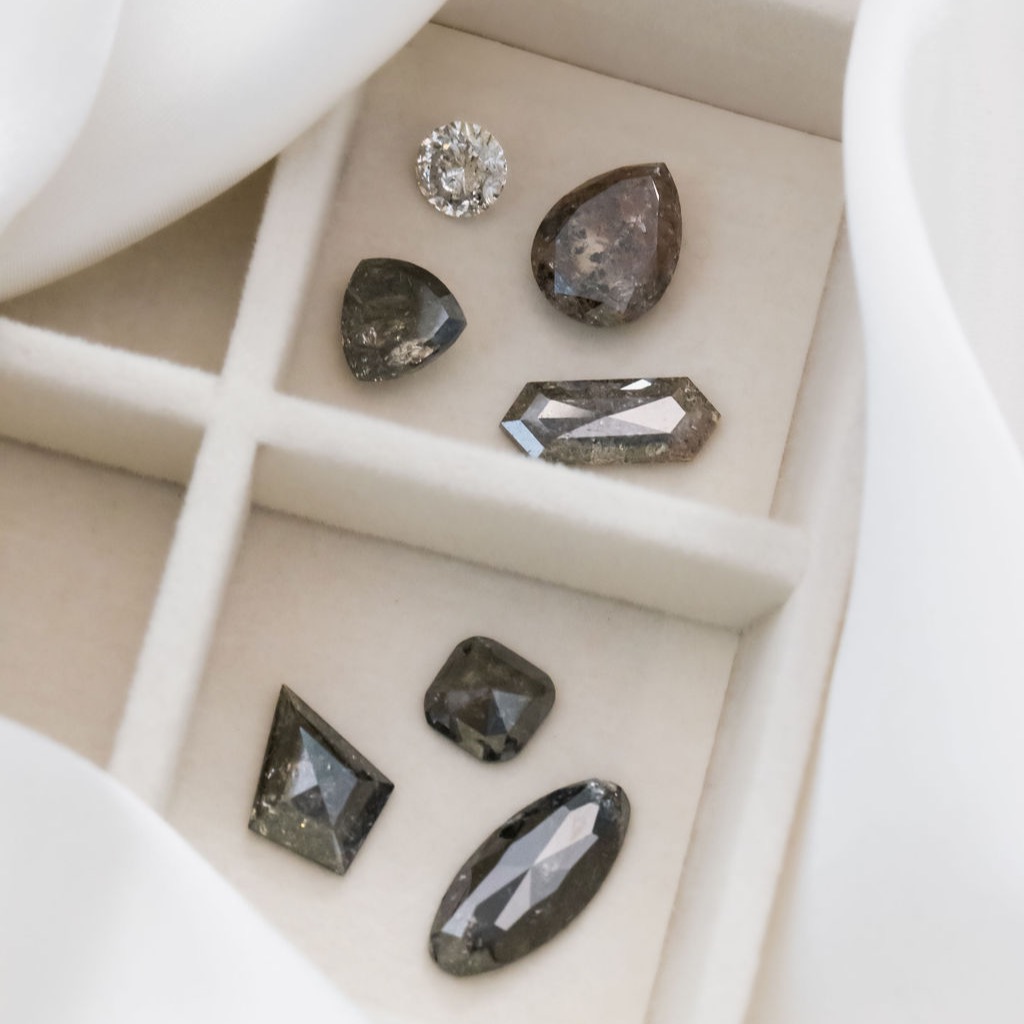
Diamonds with Inclusions
While inclusions are undesirable in white diamonds, many specialty diamonds are prized for them. Inclusions can add unique features and depth to a stone, making them a popular choice for non-traditional engagement rings.
Some popular types of included diamonds are:
Rustic: These stones feature inclusions that give them a rustic, speckled appearance.
Galaxy: Similar to rustic, galaxy diamonds feature many inclusions that create an illusion of depth like the starry night sky.
Moon fire: Cloudy inclusions give these stones a unique, ethereal appearance.
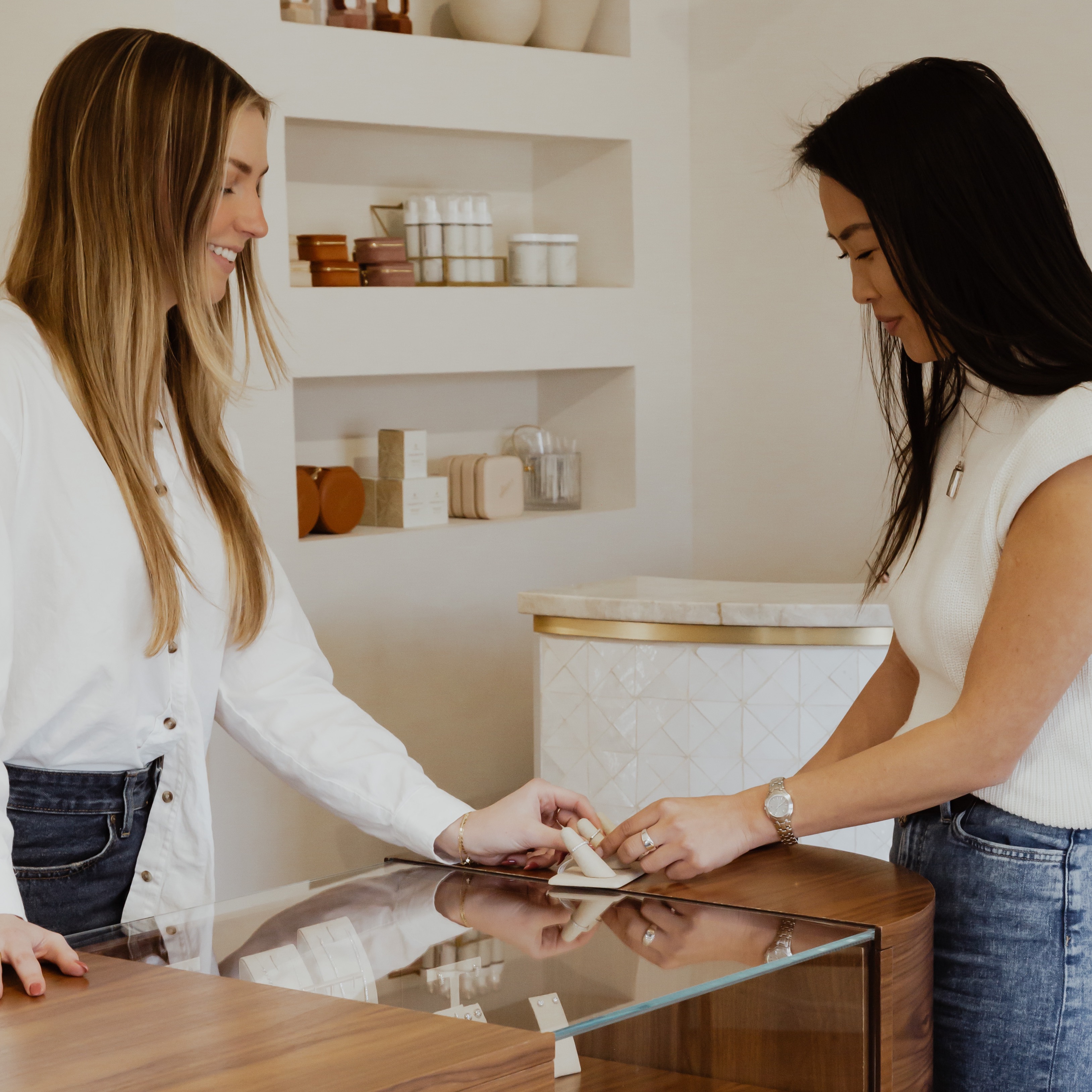
Step-by-step Guide to Purchasing a Diamond with Sarah O.
You’ve learned the 4 Cs, explored different diamond shapes and styles, and considered factors such as certification and ethical sourcing. Feeling overwhelmed about where to start? The expert staff at Sarah O. are here to guide you through every step of the way. Read on for a step-by-step guide for what to expect in the purchase process.
1. Research
Dive deeper into the 4 Cs to learn your preferences for each category. Decide which categories you’ll prioritize on your diamond search, and which ones you’re willing to be flexible on.
2. Compare diamonds
Once you’ve narrowed down what you’re looking for, it’s time to look at specific diamonds to examine their individual character and profile. Schedule an in-person or virtual shopping appointment with Sarah O. today to get started.
3. Verify certificate
Before choosing a stone, verify the GIA certificate to confirm the diamond’s specifications and value.
4. Choose setting
Your diamond’s setting plays a significant role in its appearance. Discuss ring settings with your jeweler to ensure you’ll be happy with the finished look.
Not seeing a setting you love? Consider creating a custom piece.
5. Make your purchase
You’ve done your research and picked out or designed your ring. Now it’s time to seal the deal! Sarah O. offers returns and exchanges on most orders within 30 days of receipt, so you can feel confident about your purchase. See our full return policy here.
6. Post-purchase care
Once you’ve received your diamond ring, continue to care for it at home and with regular cleaning appointments. You may need to resize your ring to ensure it stays secure on your hand.
Every ring purchased through Sarah O. includes one complementary resize, and free jewelry cleanings in-store. Read more about resizing.
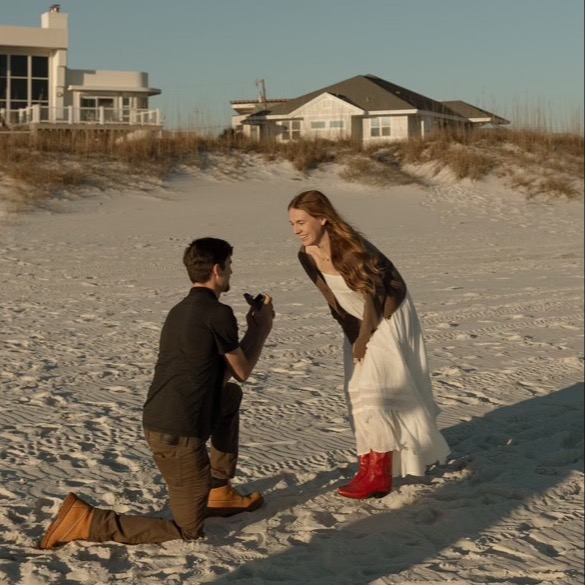
Cost and Budgeting
Before purchasing a diamond for an engagement ring or other jewelry piece, ensure you and your partner are on the same page. The diamond you choose can have a big impact on the overall price, so being aligned on what is important to you is key.
If you’ve heard of the "three months’ salary" guideline and it feels overwhelming - don’t worry. That idea originated in an old marketing campaign by De Beers diamond company, and it doesn’t need to define your decision. Your budget should reflect what feels right for you and your lifestyle. What matters most is finding a ring you truly love and feel good about.
Read our in-depth engagement ring budgeting guide for more tips on budgeting for your diamond purchase.
Where to Buy a Diamond
Today there are countless options for where to buy a diamond. From traditional jewelers to online loose diamond shops, read on the pros and cons of different diamond retailers.
Online Only Retailers
Many websites sell loose diamonds, allowing you to browse a large category of unique stones. A benefit of shopping for diamonds online is the sheer volume of stones available.
Pro: You can browse a high volume of diamonds without leaving your couch.
Con: Diamonds can look very different in person compared to photographs.
National Jewelry Chains
National retailers provide a classic and time-honored option for shopping diamonds. You’ll be able to see diamonds in person and browse a wide variety of settings.
Pro: With a wide range of physical locations, these retailers are easy to visit in person and carry a range of stones and settings.
Con: One-size-fits-all approach means you’ll get less personalized support and mark ups may make stones more expensive.
Local or Boutique Jewelers
Small jewelers carry a wide selection of diamonds, with an intimate shopping experience that’s catered to you and your partner. Your jeweler can also source stones to fit your expectations, so you can see what you need in-person before purchasing.
Pro: Work directly with the jeweler to source a stone that meets your individual needs
Con: Smaller retailers may have a limited range of stones in stock but may be able to source additional stones to your specifications."
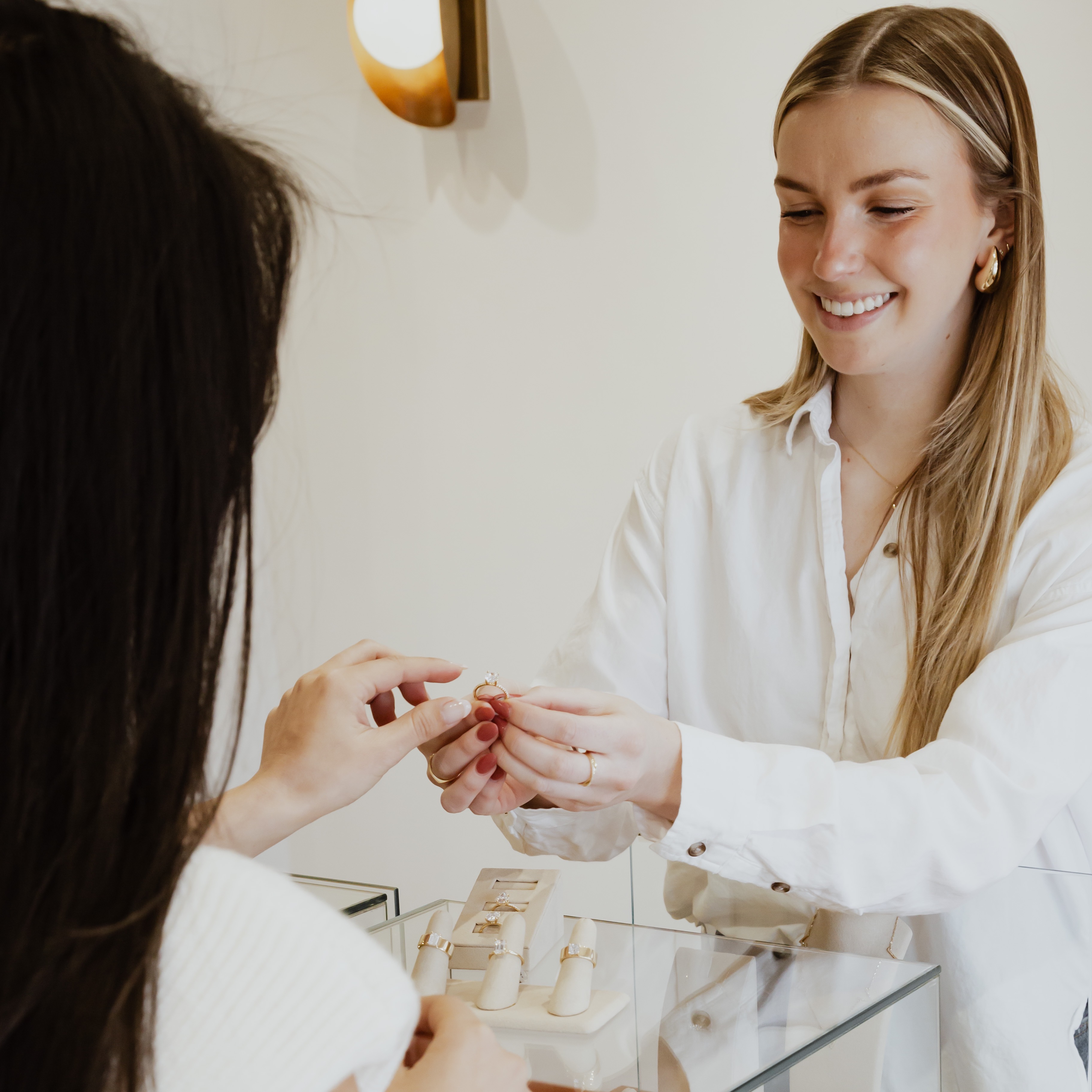
Find Your Dream Diamond
At Sarah O., we’re committed to making the diamond buying process easy and accessible for all. When you’re ready to make your diamond purchase, our expert designers are here for you every step of the way. Whether you’re shopping for a classic solitaire ring or a unique custom piece, make your diamond dreams a reality with Sarah O. Jewelry.
Looking for more engagement and jewelry tips? Read more on the Sarah O. blog.

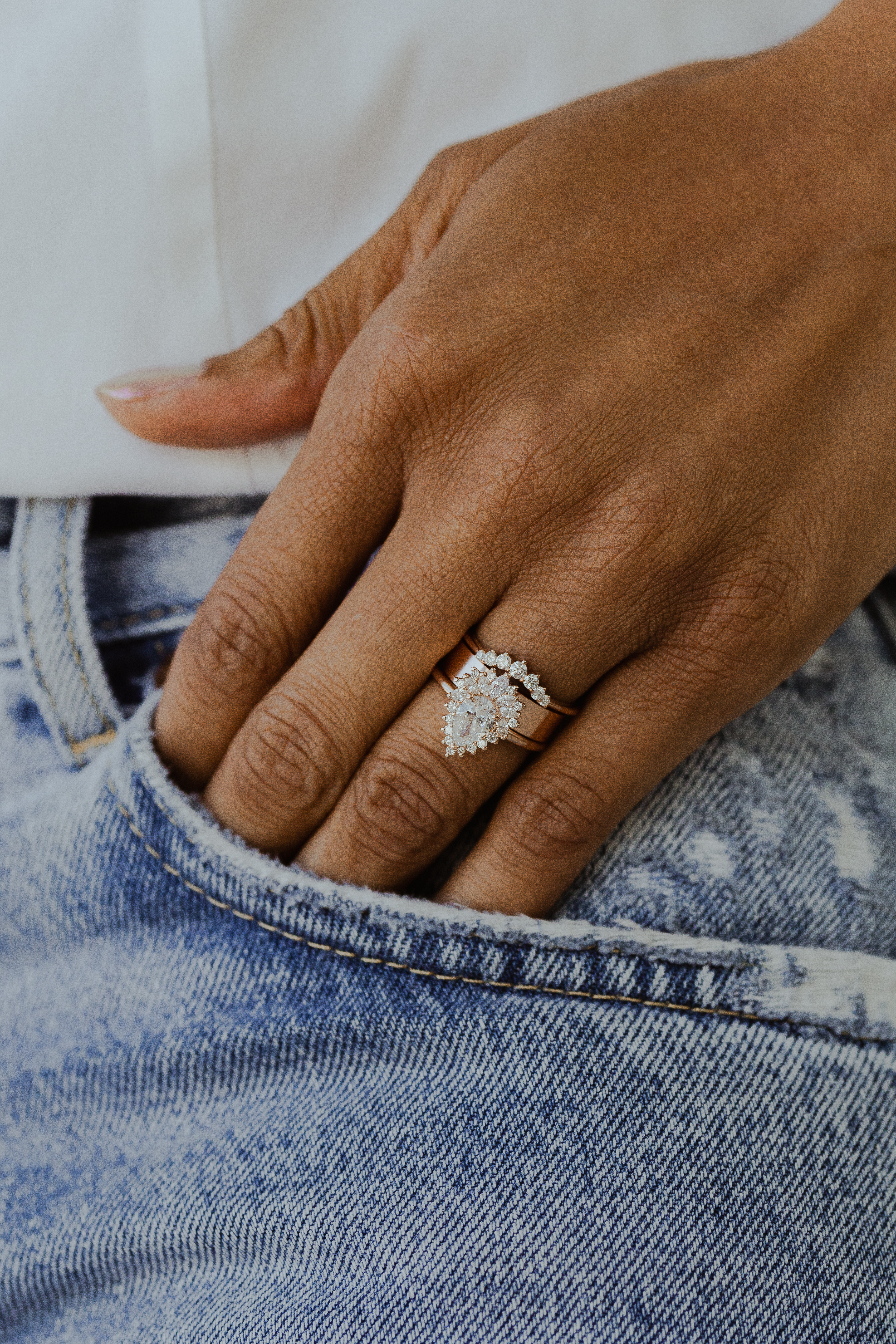
Classic. Brilliant. Timeless. Designed to celebrate your forever with elegance that never fades.